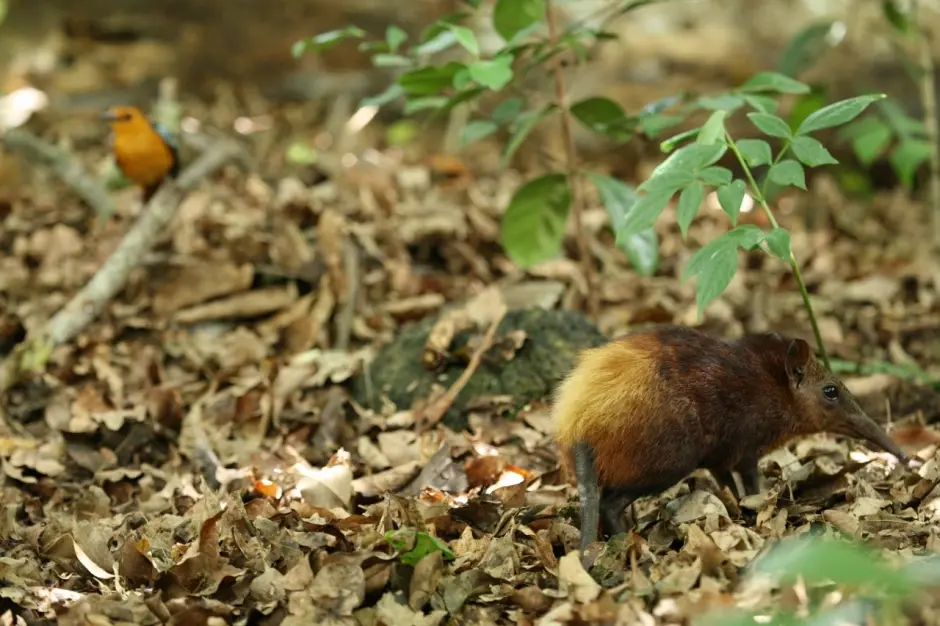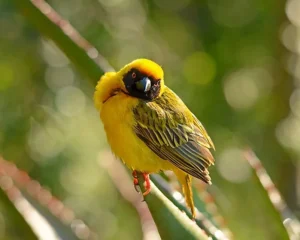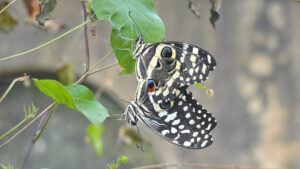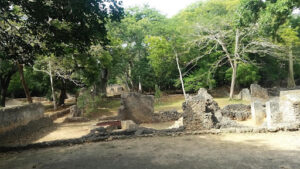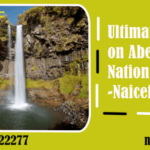What secrets does the largest coastal forest in East Africa hold within its ancient trees? Arabuko Sokoke National Park gives you a thrilling exposure to the enchantments of its dense biodiversity. Naicef, gives you an ultimate guide of Arabuko Sokoke forest reserve and things to do in Arabuko Sokoke forest kenya.
For a top best package tour to Arabuko Sokoke, kindly contact Naicef via our email my@naicef.com or call +254799922277.
We also do offer you with amaizing, customized Naicef wildlife safari tours across all Kenyan parks.
Arabuko Sokoke forest offers you weird, scenic and wonderful endangered species found nowhere else on earth. This do include the Mighty Elephant, member of the ‘Big Five’, to the endemic Elephant Shrew, a member of the ‘Small Five’.

Interesting Facts That Unveil the Wonders of Arabuko Sokoke National Park
1. Wildlife Species
Do you know some of the rarely found species in the world? Arabuko-Sokoke forest is a home to a variety of the endemic species and here are some of them;
a) Endemic Animal species
Arabuko Sokoke is home to the endangered Golden-Rumped Elephant Shrew making it the only place in the world where you can spot this creature. This is among the “Small Five” members animals.
They are the Elephant Shrew, Buffalo Weaver, Ant Lion, Rhino Beetle and Leopard Tortoise. Their naming ‘Small Five’ basically is due to their reflective attributes to their respectively ‘Big Five’ members.
In the case of the Elephant Shrew, it is because of its long trunk-like snout similar to that of the Majestic Elephant.
Apart from the Golden-Rumped Elephant Shrew, Arabuko Sokoke also hosts other globally threatened species. They do include the Sokoke Bushy Tailed Mongoose and the Ader’s Duiker.
This makes the venture even more exciting coming across these rare species. Isn’t it amaizing?
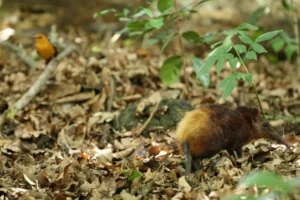
b) Endemic Bird species
Are you a bird lover! Did you know that Clarke’s weaver bird is endemic to Kenya and Arabuko Sokoke is one of the very two places it can be found?
Other endemic birds that can best be spotted only in Arabuko Sokoke national park are;
the Sokoke Pipit, the Sokoke Scops Owl, East Coast Alakat, Amani Sunbird and Spotted Ground Trush.
2. Strategic Location
Being located along the Kenya’s coastline, Arabuko Sokoke is the only remaining largest coastal forest in East Africa. This makes it a haven for a wide variety of species from the land animals to the amaizing Seabirds.
3. Community Involvement
The forest has involved the community in its operations. This is through volunteerships and non-profit organizations such as the friends of Arabuko Sokoke. It is divided into three community forest associations that participate in the preservation of the forest.
Arabuko Sokoke Forest History
Covering an area of 420km sq, the forest was first crowned as a Crown Forest in 1932 and got gazetted in 1943. In 1968, the park was then added the Kararacha extension to the south-east.
Later in the 1980s the forest was then officially established as national park. In 2019 it was then declared as a world biosphere by UNESCO.
The reserve is jointly managed by the KWS, Kenya Forest Service, Kenya Forest Research Institute, Friends of Arabuko Sokoke among others. This thus shows how this magnificent destination is well preserved and protected.
Arabuko Sokoke National Park Location
The Arabuko Sokoke forest kenya is located in Kilifi County along the Kenya’s coast near the town of Malindi. This then makes it 408 km south from Nairobi and 110 km north of Mombasa.
Accessibility
By road: The park can be accessible via road from Nairobi, along the Mombasa coastal highway to Malindi. Here you will get to enjoy the scenic journey with beautiful coastal views.
By air: The fastest way to reach the forest is via air through the Malindi Airport which is near the forest. From there you can connect via road which is a 30 minutes drive.
Discovering Arabuko Sokoke National Park
1. Fauna
The place offers great views of different wildlife species and being the largest East Africa coastal forest, it’s a home to a wide variety of animals. Some of them do include; Vervet Monkeys, Savanna Elephants, various amphibians among others.
Apart from the animals, the forest also entails over 282 different kinds of butterfly among which some of them are endemic. This attributes to the beauty of the forest making the experiences memorable.
2. Flora
Being a dense forest, the park is home over 50 different kind of plant species and a few varieties of forest covers. Some of them include Cynometra Forest, Thickets, Mixed lowland forests among others that are rare.
Things To Do in Arabuko Sokoke Forest
1. Guided Tours
Get to be shown around of the majestic forest with its different entailments by a guide. Most of the guides are naturalist and bird experts who will enable you to locate most of the attractions.
Here you get to come across the different wildlife species such as the Mighty Elephants, Buffalos, Baboons and others.
2. Bird Watching
Did you know Arabuko Sokoke was once recognized by Birdlife International, as Africa’s second birdlife conservation area?
This therefore, being a bird-watching paradise, the forest is home to over 250 different kinds of bird species. Some of which do include the shorebirds, Amani Sunbird, the vulnerable Clarke’s Weaver and the endangered Sokoke Scops Owl.
3. Butterfly Watching
The forest amazes you with the alluring beautification of different kinds of butterflies. It holds over 282 butterfly species symbolizing that, 30% of these species in kenya are hosted in the forest.
4. Game Drives
The park offers scenic views of different wildlife to enjoy a game drive. Some of them do include; African Buffalo, Mighty Elephant, Water Buck, Bush Buck, Caracal among others.
5. Self-Guided Hiking Trails and Nature Walks
The park offers you the different opportunities to experience its enrichments. This is through hiking and astonishing nature walks in the forest. Also, it does offers you with scenic spots such as the Nyari viewpoint to enjoy the views of this magical forest.
Get also to challenge yourself in experiencing other hiking trails in considerate of your level of fitness that are the best in Kenya.
6. Visit the Gedi Ruins
The Arabuko Sokoke is so magical that it has the remains of a 13th century town in its dense thick vegetation. Gedi ruins was a Swahili town that was protected from the Portuguese during the colonial time.
Get to explore the remains of these settlement and how people back then used to live.
Isn’t it fascinating of the history in it? Also get to visit the Vasco Da Gama Pillar which is also a fun thing to do in Malindi Marine National Park.
Best Time To Visit Arabuko Sokoke Reserve Kenya
The park can be accessible all year round, but it is best to visit during the dry seasons (December to March and July to September).
This is because during the other times, rainy seasons, the forest trails may tend to be challenging to go through. This may then make it uneasy to enjoy the majestic Arabuko-Sokoke forest and all it has in store for you.
Friends of Arabuko Sokoke
Friends of Arabuko Sokoke was established in 1999 by the local residents. It is among the non-profit conservation organizations that aims in conservation of Arabuko Sokoke Forest.
They do work closely with the government and local communities in protecting the forest and enhancing eco-tourism. Some of their sustainable moves are such as
a) Job Employment. The organisation has employed community scouts that protect the forest on a regular basis.
b) Sustainable livelihoods. Due to the needs and opportunities arising for the local people, the organisation is supporting the sustainable livelihood projects.
This they do by working with the local associations to implement projects such as cassava farming and beekeeping.
c) Education and Awareness. Friends of Arabuko Sokoke do provide training programs to better enhance the knowledge of the local people.
This enables the young men and women in improving their future ability for employment.
Arabuko Sokoke forest entry Fee
To be able to access this pristine protected forest, here are the park’s entrance fees;
Arabuko Sokoke Park fees for Citizens and Residents
- Adult – Ksh 200
- Child- Ksh 50
Arabuko Sokoke Park fees for Residents
- Adult – Ksh 400
- Child- Ksh 100
Arabuko Sokoke Park fees for Non-Residents
- Adult – Ksh 600
- Child – Ksh 150
Accommodations Near Arabuko Sokoke National Park
Some of the places to enjoy your stay as you visit the Arabuko Sokoke are such as;
1.Watamu Beach Cottage
2. Kobe Suite Resort
3. Mida Creek Nature Camp
4. Villa Manu
5. Gecko Resort
6. Garoda House Turtle Bay
and Naicef is ready to help you out find a nice place to spend your vacation.
Conclusion
Arabuko Sokoke National Park is East Africa’s largest coastal forest that is home to many endemic species. Some of these rare species do include;
1. Golden-Rumped Elephant Shrew
2. Clarke’s Weaver Bird
3. Ader’s Duiker
4. Sokoke Pipit
5. Sokoke Scops Owl
6. East Coast Alakat
7. Amani Sunbird
8. and Spotted Ground Trush
In the late 1980s, some parts of the forest were officially established as a national park. The reserve on the other hand is jointly managed by the KWS, Kenya Forest Service among others.
The Arabuko Sokoke forest kenya is located in Kilifi County near the town of Malindi making it accessible. This then makes it 408 km south from Nairobi and 110 km north of Mombasa.
Some of the discoveries in Arabuko Sokoke are the wide array of Flora and Fauna. From the endemic such as Golden-Rumped Elephant Shrew, to the different kind of birds and butterfly species.
Moreover, Arabuko Sokoke forest entails different variety of vegetations such as Cynometra Forest, and Mixed lowland forests. Some of which can only be found nowhere else in Kenya and Africa rather than here.
The different fun activities you can get to enjoy as you visit Arabuko Sokoke Forest are such as;
Guided tours, bird watching, butterfly discovery, game drives, hiking and nature trails, visit to Gedi ruins among others.
Best time to visit is usually the dry seasons (December to March and July to September). Friends of Arabuko Sokoke is among the non-profit organisation that help preserve this great forest.
For best tours, Naicef is the best blog in Africa giving you the top guides to different attractions in Nairobi, Kenya and Africa in general. However, always remember that, every safari you book with Naicef is always a good sustainable move.
For more information kindly reach us through our email my@naicef.com or tap +254799922277.
Frequently Asked Questions (FAQs) About Arabuko Sokoke
1. How can i get to Arabuko Sokoke?
The forest can be accessed via road as it is near Malindi town. Also, one can opt to use air means from Nairobi to Malindi via Malindi Airport.
2. What can i see at the park?
The park offers alluring endeavors of different wild species some of which that are endemic. These include the rare Golden-Rumped Elephant Shrew, Clarke’s Weaver, Elephants, different kinds of Butterflies.
3. What fun activities can i do at the park?
At the park, you get to enjoy the guided tours, game drives, nature walks, bird watching, butterfly watching, etc.
4. How big is Arabuko Sokoke Forest?
The forest covers an area of approximately 420 sq km making it the largest East Africa Coast Forest.
5. Can you camp in Arabuko Sokoke?
Yes, camping is allowed but in only the designated parts of the forest.
